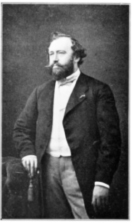
Emerging from his Paris workshop, musician-inventor Adolphe Sax files fourteen patents for an instrument destined to revolutionize American music nearly a century later. His new invention: the saxophone.
Initially crafted from wood, Sax’s new instrument flared at the tip to form a music-amplifying bell. Designed in seven sizes, from sopranino to contrabass, the saxophone combined the easy fingering of large woodwinds with the single-reed mouthpiece of a clarinet.
The saxophone became popular with French army bands, but Sax spent decades in court trying to fend off knockoffs and made only meager profits before his patents expired, in 1866. Myriad modifications followed, improving ease of play. U.S. production began in 1888 when Charles Gerard Conn of Elkhart, Indiana, started manufacturing the instruments for military bands. By the early 1900s, the saxophone was a comedy fixture on the vaudeville circuit, where musicians used it to mimic chicken sounds.

Eventually produced in baritone, tenor, alto, and soprano models, the saxophone became a creative tool of the first magnitude only in the early 1920s, when New Orleans clarinet player Sidney Bechet grew weary of being drowned out by his bandmate’s much louder cornet. When the jazz musician switched to soprano saxophone and began projecting a stronger “voice” within the ensemble, other players took note.
Coleman Hawkins, inspired by Louis Armstrong’s syncopated trumpet solos, became the first jazz virtuoso to exploit the deep, throaty tones of the tenor sax. Ben Webster and Lester Young soon followed, showcasing soulful tenor solos with the Duke Ellington and Count Basie bands during the 1930s.
In the mid-1940s, alto sax player Charlie Parker pioneered bebop music by producing rapid-fire flights of improvisational fancy, light-years removed from the genteel European ditties imagined in the 1840s by Monsieur Sax.—HH